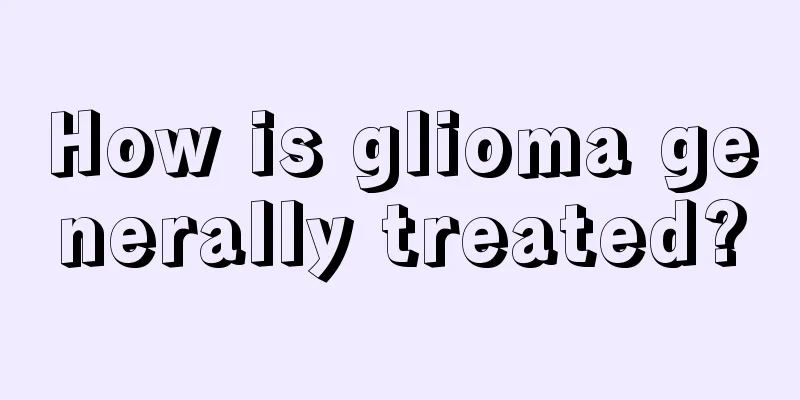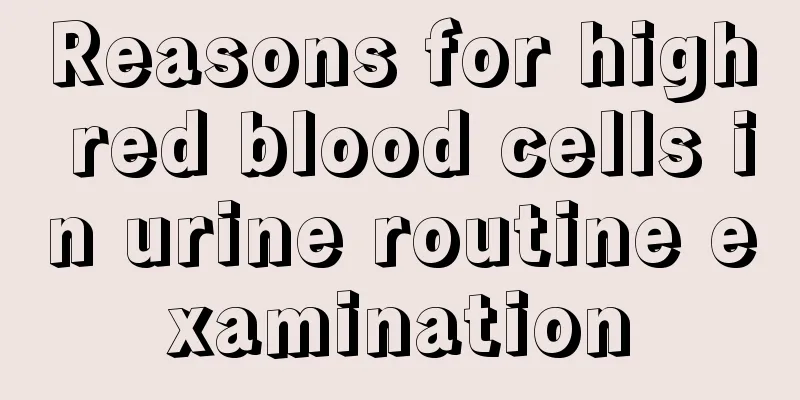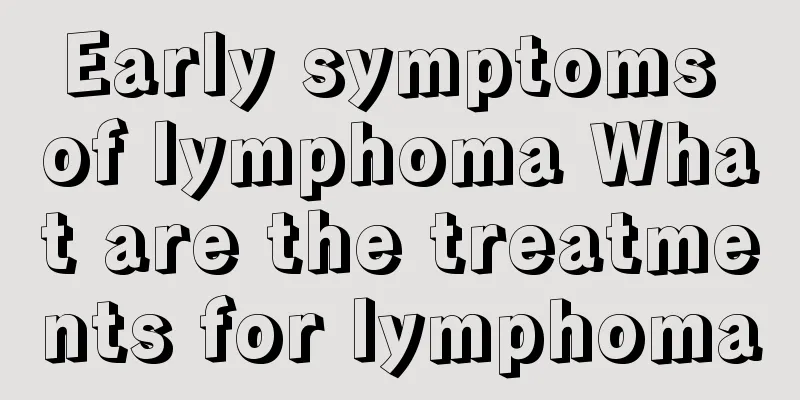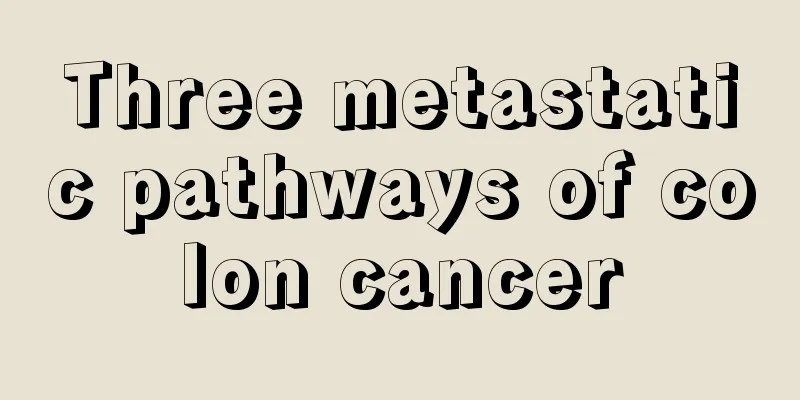How is glioma generally treated?

|
Glioma is a malignant tumor of the brain. If you are unfortunately diagnosed with glioma, don't be afraid. It is important to make a comprehensive analysis based on your individual condition and choose a correct treatment plan for yourself. This is conducive to the treatment of the disease. So, how is glioma generally treated? The treatment of glioma is mainly surgical. However, due to the infiltrative growth of the tumor and the lack of obvious boundaries with the brain tissue, it is difficult to completely remove the tumor except for those in the early stage when the tumor is small and located in non-functional areas. Comprehensive treatment is generally advocated, that is, radiotherapy, chemotherapy, etc. after surgery can delay recurrence and prolong survival. Early diagnosis and timely treatment should be strived for to improve the treatment effect. In the late stage, surgery is not only difficult and dangerous, but also often leaves neurological deficits. Especially high-grade gliomas often recur in a short period of time. 1. Surgical treatment: The principle is to remove the tumor to the greatest extent possible while preserving nerve function. Surgical resection is the first choice for relatively superficial and large gliomas. The operation is performed entirely under a microscope, using microneurosurgical techniques to strive for anatomical resection along the edge of the tumor, with minimal damage to tissue and nerve function to achieve maximum tumor resection. During the operation, conventional neuronavigation, functional neuronavigation, intraoperative neuroelectrophysiological detection fluorescence technology, intraoperative MRI real-time imaging neuronavigation, and intraoperative B-ultrasound are used to remove the tumor. The surgery of functional area glioma (involving the patient's limb movement and language function) is a major difficulty in neurosurgery at home and abroad. We use the most advanced intraoperative awakening technology, that is, during the removal of the patient's tumor, the patient retains the movement and language function, and during the removal process, the patient is asked to move his limbs and talk with medical staff to ensure that the surgical resection range does not exceed the functional area in real time. This technology is a great challenge for anesthesiologists and neurosurgeons. For low-grade gliomas with only epileptic symptoms that can be well controlled by drugs and are located in the main functional area or the tumor is small, since surgery may cause disability, "observation and waiting" can be done under stable imaging conditions. For low-grade gliomas in non-functional areas or adjacent to functional areas, brain function localization technology can be used to identify cortical and subcortical structures related to key brain functions, especially language, so that surgery can be performed according to functional boundaries to achieve maximal safe resection of low-grade gliomas, including complete resection or even super-complete resection. For patients with early stage and small tumors, we should try to completely remove the tumor. For superficial tumors, we can cut the cortex around the tumor. For tumors in white matter, we should avoid important functional areas when making cortical incisions. When separating the tumor, we should keep a certain distance from the tumor and do it in normal brain tissue, not close to the tumor. Especially for low-grade gliomas such as pilocytic astrocytoma and oligodendroglioma in the frontal lobe or anterior temporal lobe or cerebellar hemisphere, there is a better prognosis after surgery. For larger tumors located in the frontal lobe or the front part of the temporal lobe, lobectomy can be performed to remove the tumor together. For those in the frontal lobe, the posterior edge of the incision should be at least 2 cm in front of the anterior central gyrus, and in the dominant hemisphere, the motor language center should be avoided. For those in the temporal lobe, the posterior edge should be before the inferior anastomotic vein, and damage to the lateral fissure vessels should be avoided. A small number of tumors located in the occipital lobe can also be lobectomized, but visual field hemianopsia will remain. If the frontal or temporal lobe tumor is too extensive to be completely removed, the tumor can be removed as much as possible while the frontal pole can be removed or internal decompression can be performed at the frontal pole, which can also prolong the time of recurrence. For ventricular tumors, the brain tissue can be cut from non-important functional areas to enter the ventricles according to their location, and the tumor can be removed as much as possible to relieve ventricular obstruction. Care should be taken to avoid damaging the hypothalamus or brainstem adjacent to the tumor to prevent danger. In addition to small nodular or cystic brainstem tumors, which can be removed, shunt surgery can be performed for those with increased intracranial pressure. Shunt surgery can also be performed for those with difficult-to-remove upper vermis tumors. For patients over 65 years old; with poor neurological function before surgery; diffuse infiltration of the dominant hemisphere or invasion of both hemispheres; lesions located in or adjacent to the functional area cortex, deep white matter or brain stem, which cannot be satisfactorily removed clinically; and glioma. Navigation, stereotactic biopsy or craniotomy biopsy can be performed. After glioma surgery, not only routine pathological examinations but also molecular pathology tests are required. The presence of MGMT promoter methylation, IDH1 or IDH2 mutations, and 1p19q combined deletion are of great significance for prognosis and guiding chemoradiotherapy. 2. Radiotherapy: The radiation sources used for external irradiation include high-voltage X-ray therapy machines, 60Co therapy machines, electron accelerators, etc. The latter two are high-energy rays with strong penetration, low skin dose, small bone absorption, and little side scatter. The dose of the accelerator is concentrated at the expected deep part. Beyond this depth, the dose drops sharply, which can protect the normal brain tissue behind the lesion. Radiotherapy should be performed as soon as possible after the general condition recovers after surgery. The irradiation dose is generally 5000-6000cGy for gliomas, which is completed within 5-6 weeks. The sensitivity of various types of gliomas to radiotherapy is different. It is generally believed that poorly differentiated tumors are higher than well-differentiated ones. Glioblastoma multiforme is only moderately sensitive, and astrocytomas, oligodendrogliomas, pinealocytes, etc. are worse. Ependymomas, because they are easy to spread with cerebrospinal fluid, should include full spinal canal irradiation. 3. Chemotherapy: Highly lipid-soluble chemotherapy drugs that can pass through the blood-brain barrier are suitable for brain gliomas. In astrocytoma grades III to IV, the blood-brain barrier is damaged due to edema, allowing water-soluble macromolecular drugs to pass through. Therefore, some people believe that the selection of drugs can be expanded to many water-soluble molecules. But in fact, in the area around the tumor where proliferating cells are dense, the damage to the blood-brain barrier is not serious. Therefore, the selected drugs should still be mainly lipid-soluble. The current main drug is temozolomide (TMZ). For anaplastic oligodendroglioma (AO), the PCV regimen can be selected. BCNU sustained-release chemotherapy can be implanted in the surgical cavity. 4. Symptomatic treatment: treatment of cerebral edema and increased intracranial pressure; treatment of epilepsy; prevention of deep vein thrombosis (VTE); symptomatic treatment of psychiatric symptoms. 5. Rehabilitation therapy: physical therapy; occupational therapy; speech and swallowing therapy; cognitive and behavioral therapy; recreational therapy; psychological rehabilitation; rehabilitation engineering; drug therapy; traditional Chinese medicine treatment. 6. Multidisciplinary collaborative treatment (MDT): It is composed of relevant doctors and medical professionals who are able to develop accurate and effective individualized treatment plans for cancer patients. |
>>: What is the best way to treat glioma
Recommend
How to exercise foot muscles
We all know that feet are a part of the body that...
Tips for reducing fever in a five-month-old baby?
Parents must take good care of their five-month-o...
Does whiskey have a shelf life?
Many people like to drink in life. In recent year...
What to eat to remove blood impurities
Removing impurities from the blood can make our b...
How about bitter mouth and bad breath tea?
Many people find that they have dry mouth and bad...
What are the uncomfortable symptoms of brain tumor? Symptoms of brain tumor
Generally speaking, because brain tumors occur in...
What kind of mask is good
The smog is getting more and more serious now. We...
Do I need to test transaminase on an empty stomach?
Generally speaking, fasting tests can improve the...
The reason why adding MSG to cola can refresh you
The reason why MSG is added to Coke to refresh pe...
What kind of shoes are good for walking?
Only the feet know whether the shoes are suitable...
What is the treatment for blocked heart vessels
At present, the problem of cardiovascular blockag...
How much does it cost to check for ovarian tumors?
The ovaries are important reproductive organs for...
How to quickly repair skin damage
Skin damage is a common condition in our lives. I...
Where are the ovaries?
Many young women do not know the importance of ov...
How to clean a non-stick pan
Nowadays, many families use non-stick pans when c...









